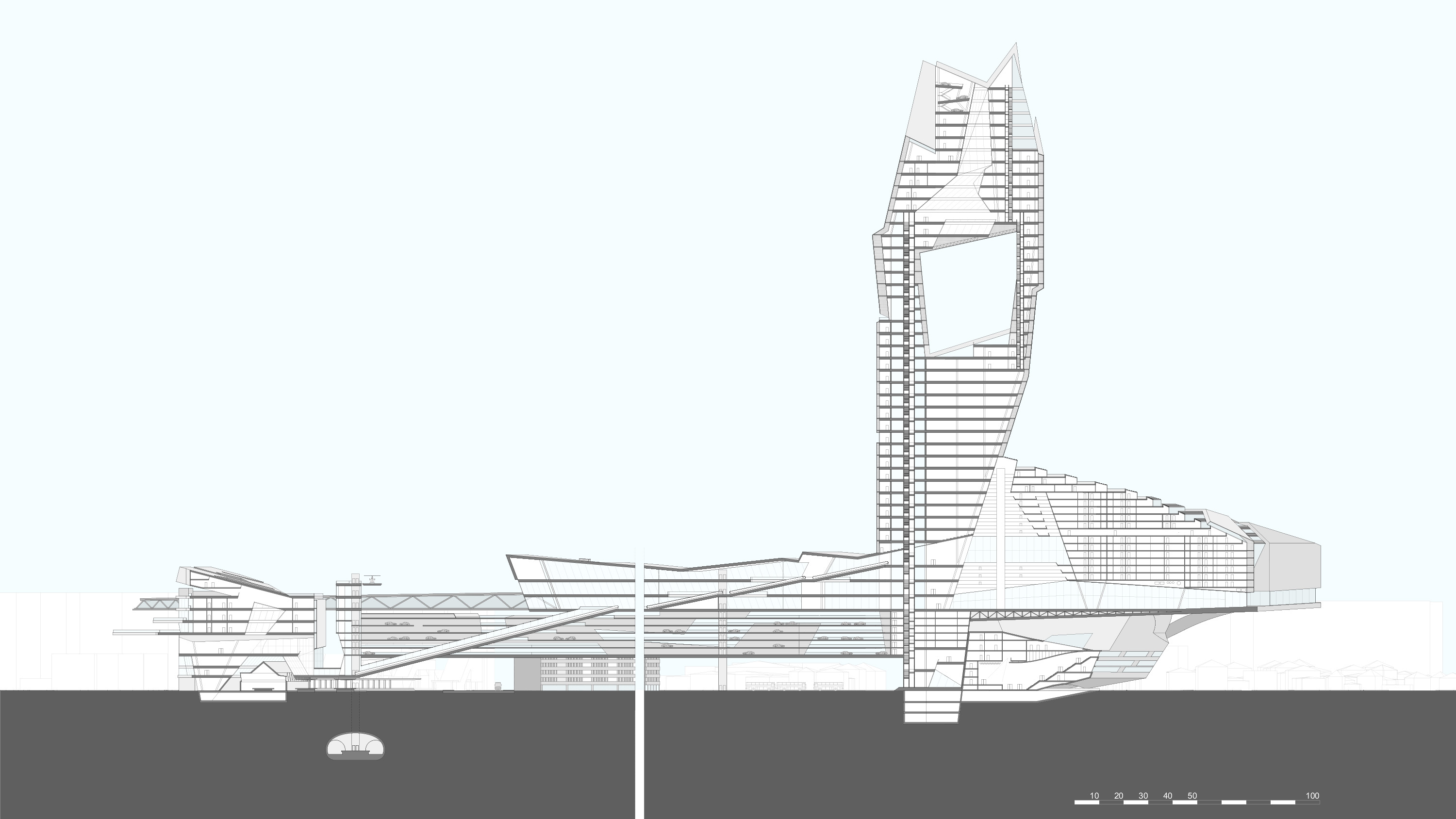








Students: Elsa Mikula & Fabiana Roppelt
Superfluous Studio:
Top Heavy
Second Year Undergraduate Design Studio
ioud - Institute of Urban Design
University of Innsbruck
2019/20
ioud - Institute of Urban Design
University of Innsbruck
2019/20
Studio Description
This semester the Superfluous Studio investigated the typology of Top-Heavy Buildings within the urban context of Seoul. The students were asked to design a Mixed Use Intersection Complex in Seoul, South Korea in order to understand how in the early 21st-century, architecture begins more and more to move into infrastructure and vice versa.
Through the various tasks students were able to construct and imagine new urban applications while taking in to consideration the cutting edge technologies that will be incorporated in to the lives of humans in the near future and what these systems might entitle in shape and form.
The design process consisted of several exercises; analysis of Infrastructure and mixed-use, abstraction of an existing building into a specific architectural design element., field studies of the relation of one architectural element to its figurative field, production of representation.
This semester the Superfluous Studio investigated the typology of Top-Heavy Buildings within the urban context of Seoul. The students were asked to design a Mixed Use Intersection Complex in Seoul, South Korea in order to understand how in the early 21st-century, architecture begins more and more to move into infrastructure and vice versa.
Through the various tasks students were able to construct and imagine new urban applications while taking in to consideration the cutting edge technologies that will be incorporated in to the lives of humans in the near future and what these systems might entitle in shape and form.
The design process consisted of several exercises; analysis of Infrastructure and mixed-use, abstraction of an existing building into a specific architectural design element., field studies of the relation of one architectural element to its figurative field, production of representation.
Project Overview
The work throughout the semester was based on composition of elements drawn from the city of Seoul. The vehicle for exploring this was the preliminary research on junctions and layers of movement throughout the city. The studio focused on the fundamental differences in negative and positive spaces, orientation, resolution, and how these differences have an impact on the organization of mixed use building complexes.
︎The work throughout the semester was based on composition of elements drawn from the city of Seoul. The vehicle for exploring this was the preliminary research on junctions and layers of movement throughout the city. The studio focused on the fundamental differences in negative and positive spaces, orientation, resolution, and how these differences have an impact on the organization of mixed use building complexes.
“Future cities are themselves ruins.
Our contemporary cities…are destined to live only a fleeting moment. Give up their energy and return to inert material. All of our proposals will be buried. And once again the incubation mechanism is reconstituted.
That will be our Future.”
Arata Isozaki (1990) Incubation Process









Students: Jonathan Enzler & Valentin Fick











Students: Carina Prem & Leopold Pretzel







Students:
Katharina Kienzl & Rosa Springmann






Student:
Kurt Brennecke & Mario Riedmann








Students:
Thomas Gallagher & Anton Riedlsperger







Students: Tamer Acar & Zoran Mirceta




